Consider the situation in which smooth ball of mass M is hanging in equilibrium with a string and a spring as shown in figure. If another small ball of mass m collides it than which of the following are correct statement(s) =is tention force due to inextensible string = is gravitational force = is spring force = is normal force due to collision between m and M.
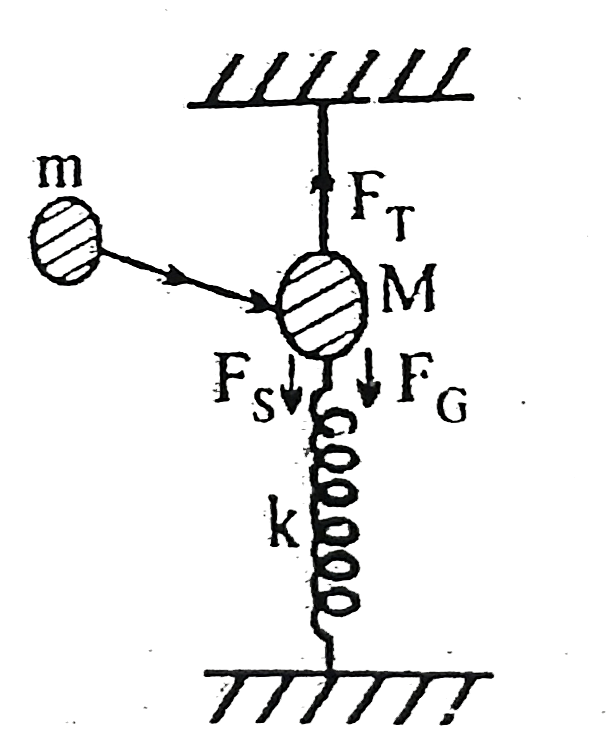
Tension force due to inextensible string is impulsive force
Spring force is non impulsive force
Gravitational force is conservative force
Normal force due to collision between m and M, is contact force
The correct Answer is:A, B, C, D
Spring and gravitational force are always Non-impulsive and are conservative in nature.
Topper's Solved these Questions
- BOOK - BANSALCHAPTER - MASTER PRACTICE PROBLEMEXERCISE - Subjective107videos
MASTER PRACTICE PROBLEM
- BOOK - BANSALCHAPTER - MASTER PRACTICE PROBLEMEXERCISE - Additional topic70videos
MASTER PRACTICE PROBLEM
- BOOK - BANSALCHAPTER - MASTER PRACTICE PROBLEMEXERCISE - Reasoning75videos
MASTER PRACTICE PROBLEM
- BOOK - BANSALCHAPTER - FLUID MECHANICSEXERCISE - PYQS AIEEE10videos
FLUID MECHANICS
- BOOK - BANSALCHAPTER - SEMICONDUCTORSEXERCISE - CBSE Question32videos
SEMICONDUCTORS
Similar Questions
A cylinder C rests on a horizontal surface. A small particle of mass m is held in equilibrium connected to an overhanging string as shown. The other end of the mass less string is being pulled horizontally by a force F as shown. Find F.
 View Solution
View SolutionA disc of mass m lies flat on a smooth horizontal table. A light string runs halfway around it as shown in figure. One end of the string is attached to a particle of mass m and the other end is being pulled with a force F. There is no friction between the disc and the string. Find acceleration of the end of the string to which force is being applied.
 View Solution
View Solution
Knowledge Check
- Question 1 - Select One
A block of mass m is suspended by different springs of force constant shown in figure.
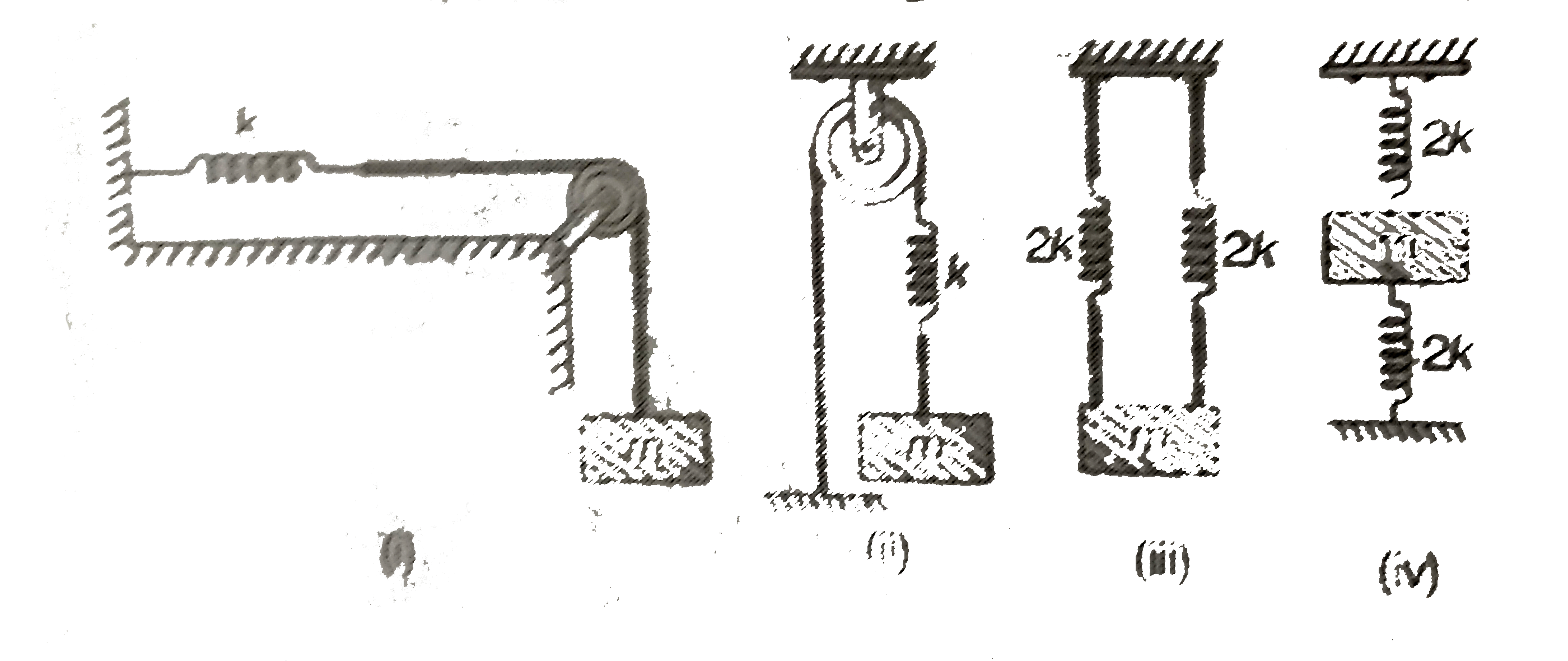 AT1=T2=T4BT1=T2andT3=T4CT1=T2=T3DT1=T3 and T2=T4
AT1=T2=T4BT1=T2andT3=T4CT1=T2=T3DT1=T3 and T2=T4 - Question 2 - Select One
A block of mass m is at rest under the action of force F against a wall as shown in figure. Which of the following statement is incorrect?
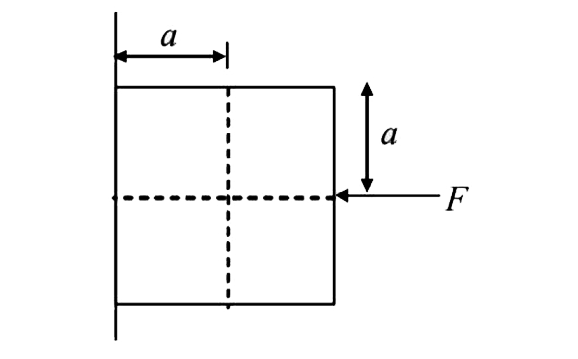 Af = mg[f friction force]BF = N [N normal force]CF will not produce torqueDN will not produce torque
Af = mg[f friction force]BF = N [N normal force]CF will not produce torqueDN will not produce torque - Question 3 - Select One
A block of mass m is at rest under the action of force F against a wall as shown in the figure. Which of the following statements is incorrect?
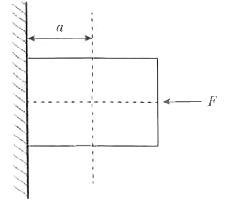 Af = mg (where f is frictional force)BF-N (where N is normal force)CNo net torque acts on the blockDN will not produce torque
Af = mg (where f is frictional force)BF-N (where N is normal force)CNo net torque acts on the blockDN will not produce torque
Two blocks of mass m1andm2 lie on smooth horizontal table in contact with each other as shown in figure

If a force F is applied to the mass m1 then the contact force between the block will beView SolutionTwo blocks connected by a spring rest on a smooth ITIM horizontal plane as shown in figure. A constant force F starts acting on block m2 as shown in the figure. Which of the following statements are not correct?
 View Solution
View SolutionIn the small block m is kept on planck of mass M and a force F is applied on planck as shown in diagram then which of the following statements is/are correct
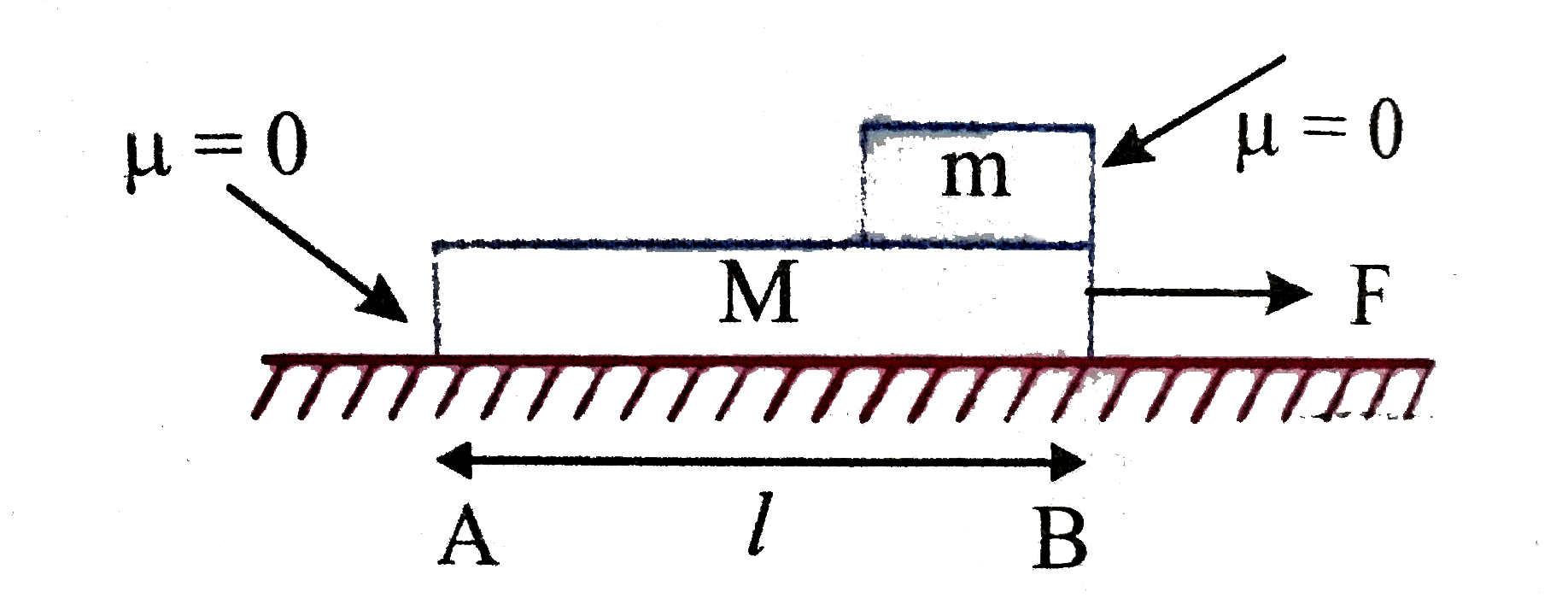 .View Solution
.View Solution
Two blocks connected by a spring rest on a smooth horizontal plane as shown in Fig. A constant force F start acting on block m2 as shown in the figure. Which of the following statements are not correct?View SolutionTwo springs are in a series combination and are attached to a block of mass 'm' which is in equilibrium. The spring constants and extension in the springs are as shown in the figure. Then the force exerted by the spring on the block is :
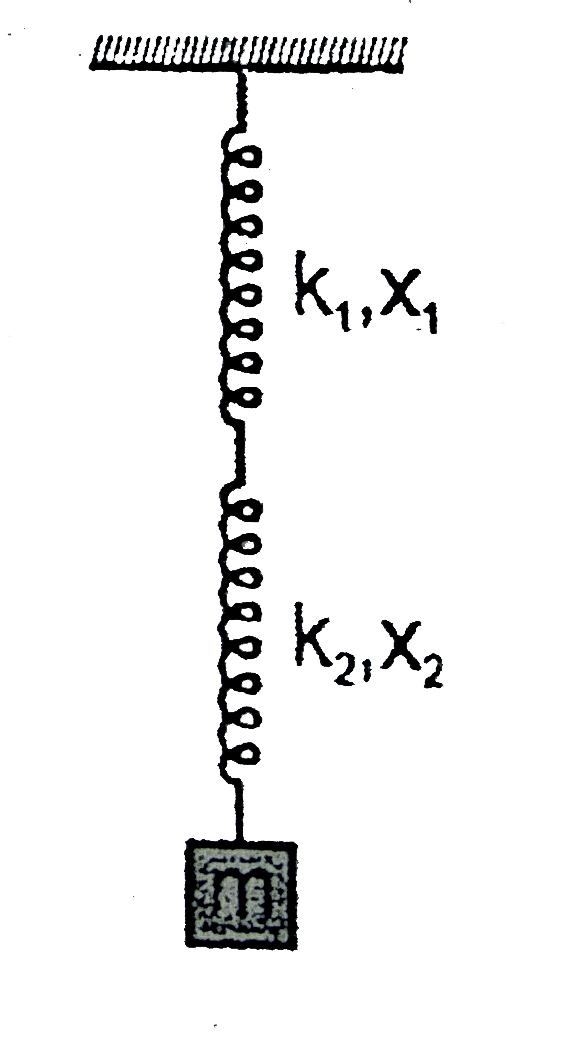 View Solution
View Solution
